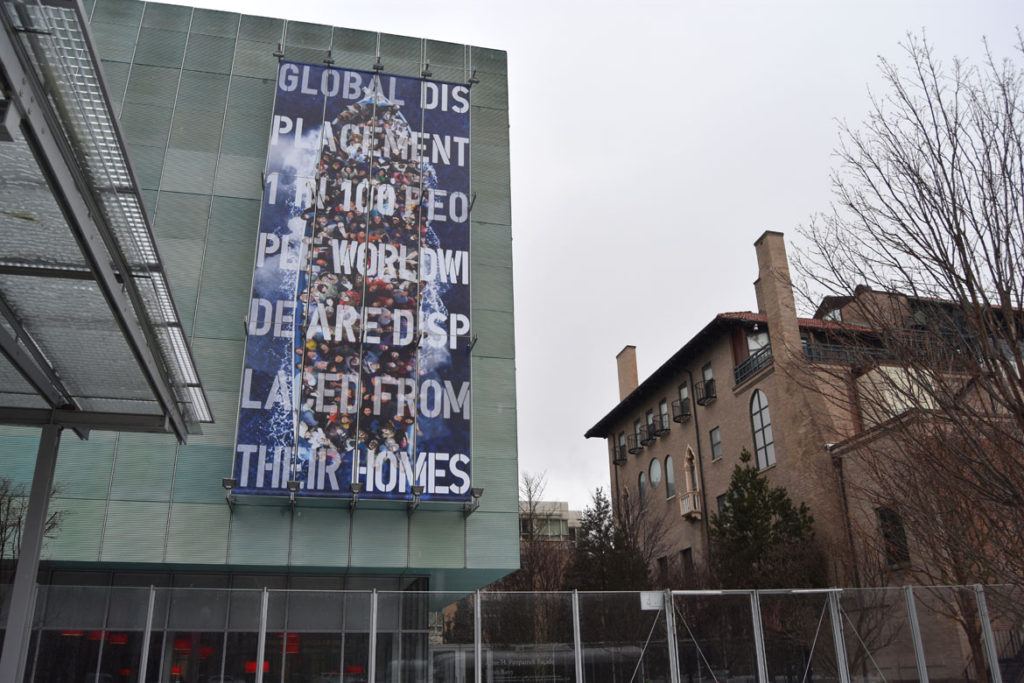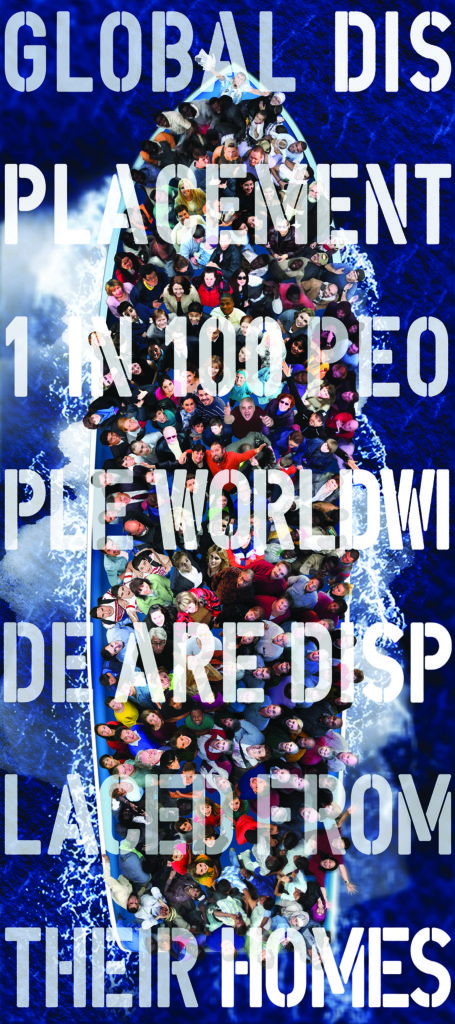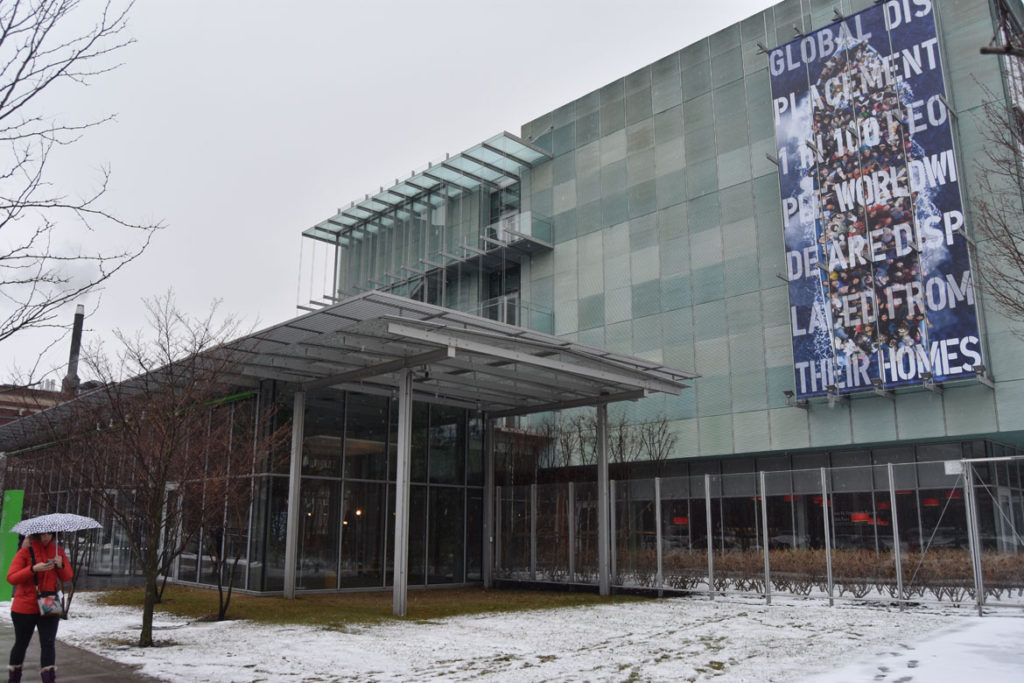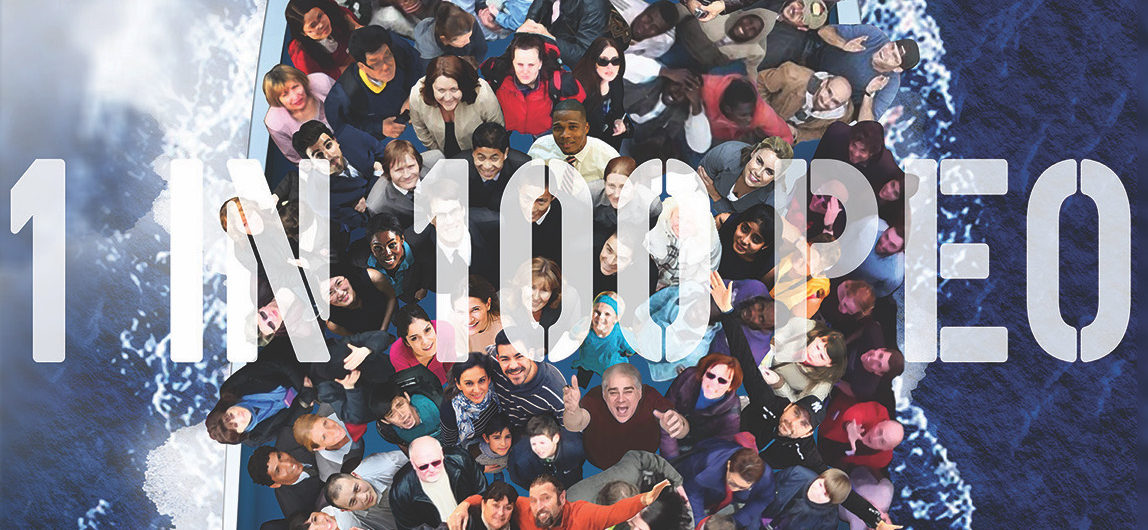On Tuesday morning, Boston’s Isabella Stewart Gardner Museum hung a new three-story tall banner on its Evans Way façade. “Global Displacement 1 In 100 People Worldwide Are Displaced From Their Homes,” it reads. And under the text is what appears to be an aerial image of hundreds of people crammed into a boat at sea. Most of them look up, smiling.
“I was intrigued by the image long before I had a chance to use it anywhere,” says Judith Barry, the artist who created the public art project, which is scheduled to remain on view though June 27. “I started seeing these drone photographs as North Africans were fleeing North Africa” during the refugee crisis that spiked in 2015. Hundreds of people overloading rickety boats alone in vast seas. They were fleeing war in Syria and “also places where climate change has produced drought.”
Barry says, “The refugee crisis that summer was intense. There was almost nowhere you could go in Europe and not see it.”
Two summers later, Barry was invited by Pieranna Cavalchini, the Gardner’s contemporary art curator, to make art for the façade, and the drone images of refugees came back to her. She thought to combine refugee photos she found with the headline of a 2016 Pew Research Center report that she’d come across: “Nearly 1 in 100 people worldwide are displaced from their homes.”

Barry is a New York-based installation and video artist who has long commuted to work in Cambridge. She was until recently a professor and director of the MFA Visual Arts Program at Lesley University’s College of Art & Desgn and is now a professor and director in the Art, Culture and Technology Program at Massachusetts Institute of Technology.

For the Gardner façade, “The imagery certainly started off based in some of the imagery of the refugee crisis,” Barry says. “Because we needed to blow it up to 32 feet, I needed to change out a lot of the actual imagery.” The problem was the actual refugee images she’d found online got too blurry when enlarged. So she took her own new photos of individuals and small groups and put the people all together in a refugee boat via digital collage.
“We did several shoots with people having them looking up,” Barry says. “I’d also go to places like MOMA [New York’s Museum of Modern Art] where I could surreptitiously take photos of people looking up.”
Are any of the people she photographed refugees? “No,” Barry says. “They’re all normal people. … They’re not homeless.”
“Drone photography is now a part of the photographic landscape. When people, even ordinary people, see a drone flying overhead, one of their reactions is to look up and smile,” Barry says. “There is certainly a delight in looking up and seeing a drone overhead.”
She means, of course, that people in the United States often look up and smile. Folks in other places have been known to have different responses to drones.
“What was strange was looking at lots and lots of photos of refugees,” she says. “They tend to look up with this expectation. To me, they were looking up with this expectation they were going to be rescued or going somewhere safe.”
“As I had to replace all the people in the drone photos I thought it would be really interesting to put people in the photos that look like us all over the country,” Barry says. “I really wanted the viewer when they look at the work to think they look a lot like U.S. people or Western European people. There are people of color [in her image], but there aren’t the great number you saw in that drone footage of people fleeing North Africa. I hope people will look at it and say, ‘That could be me.’”
Help us keep producing our great coverage of local arts by contributing to Wonderland on Patreon. And sign up for our free, weekly newsletter so that you don’t miss any of our reporting.


